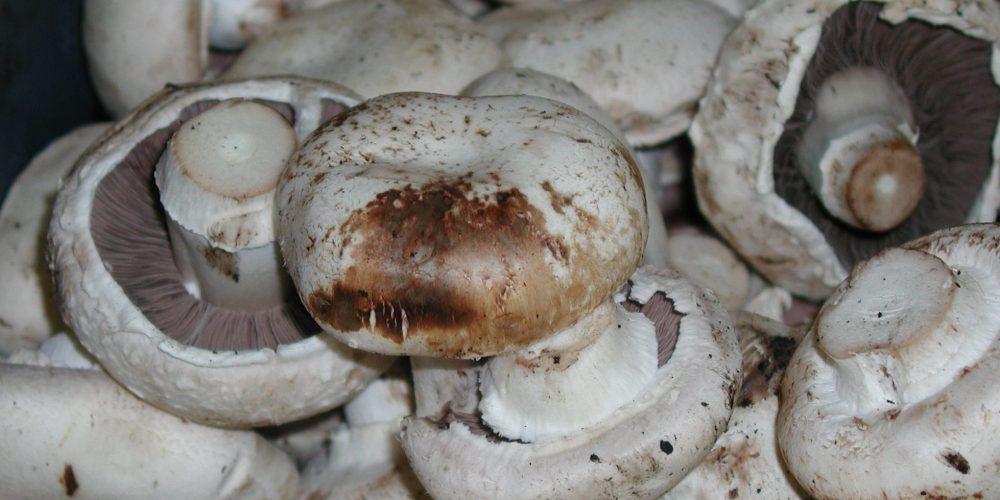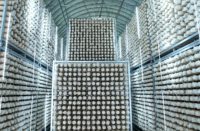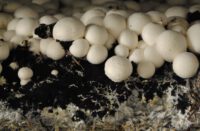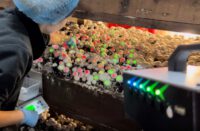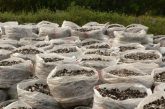In the food industry, including the mushroom sector, extensive research is conducted at the cost of significant investments by producers to ensure that the quality of the manufactured and distributed products is not compromised. The goal is simple: marketability.
Similar to many animal species, humans have the ability to determine whether the presented food is suitable for consumption or will cause serious illness based on various characteristics, signs, and symptoms. The key criteria for making such decisions include texture, taste, and odor. These parameters have persisted throughout human evolution. Today, we still use them when selecting the food we desire from supermarket shelves.
According to these criteria, for example, button mushrooms intended for the fresh market should be white, free from impurities and compost residues, firm, with a closed cap, and not showing visible gills. Of course, this doesn’t mean that a less attractive or older mushroom is not equally delicious; in fact, larger, open portobello mushroom caps are often much more flavorful than their smaller counterparts.
Microbial Deterioration
The most common phenomenon causing quality loss is deterioration caused by microbes. The triggering factors are often color changes, discoloration, or overgrowth and decay at the site of injuries. Despite the relatively low presence of bacterial pests in the majority of cultivated mushrooms, certain organisms can cause significant losses even after harvesting. For instance, Pseudomonas tolaasii can cause spotting and discoloration of mushroom caps. The solution is evident: the application of protective gases within the packaging or intensive, rapid cooling significantly inhibits bacterial growth in the product, preserving the quality of mushrooms for an extended period. In many Western European supermarkets, it’s a common practice to use paper bags for storing fresh mushrooms. This packaging prevents the accumulation of moisture caused by the mushroom’s “breathing” and greatly inhibits the proliferation of bacteria on the caps.
Discoloration Caused by Injury
Mushroom caps are delicate, requiring careful handling during harvesting and placement in trays. If the fragile mycelium structure can’t withstand handling pressure, enzymatic reactions may cause brown spots on the cap’s skin. Enzymes like tyrosinase or polyphenol oxidase catalyze the oxidation of phenolic compounds, leading to these spots and quality decline.
Research institutes in the mushroom industry globally are actively developing a device, known as a bruisometer. It’s designed to measure the maximum pressure allowed on mushroom surfaces. This innovative tool holds the potential to explore and breed new mushroom strains resistant to mechanical damage, particularly during harvesting or transportation.
Overripening
During the ripening of mushrooms, the final and most crucial stage is when they release their spores. The aging process continues after picking the mushroom from the substrate. The cap flattens, the protective “skin” covering the gills cracks, the gills spread apart, turn brown, and spore release begins. Cells gradually age, lose water, and the fruiting body browns and withers. During prolonged storage, especially at the cut end of the stem, white mushroom mycelium often appears. This doesn’t indicate mold contamination but rather the mushroom’s attempt to return to the mycelium state, where it can efficiently utilize remaining nutrients. This is also a form of quality deterioration. The loss of quality becomes apparent quickly after harvesting, limiting the shelf life and transportability of mushrooms as fresh produce.
Research institutes in the mushroom industry, such as HRI, have conducted studies to uncover the physiological and chemical processes occurring in mushrooms after harvesting. Understanding how individual reactions affect the product’s quality is crucial. It is assumed that the genetic characteristics of different varieties play a significant role in shelf life.
Effect of Stress Genes
The mushroom’s fruiting body responds rapidly to harvesting. Injuries from harvesting activate stress genes, triggering increased respiration due to water and nutrient deficiency. Carbohydrate reserves, like mannitol and trehalose, rapidly decrease, and cell extracellular space diminishes. Within days, protein content drops to 80%, prompted by stress gene activation. The same gene seems responsible for cell wall polysaccharide formation and gill-covering veil cracking. After harvesting, mushroom tissues react differently to stress, but the cap acts as an energy reservoir for gill development and spore maturation completion. Researchers note instances of localized cell death, where the mushroom sacrifices cells to nourish neighboring cells, ensuring continued survival.
Of course, consumers do not witness this highly complex process; they only see a spotted, wilted mushroom that is not very appetizing and does not meet their expectations. Developments aimed at preventing quality deterioration are highly complex and costly. Currently, physiological studies in this area are still in their infancy. Common methods, such as protective gases and cooling, merely delay these processes and cannot significantly influence them. Perhaps an innovation in the coming years will revolutionize this technique as well.


